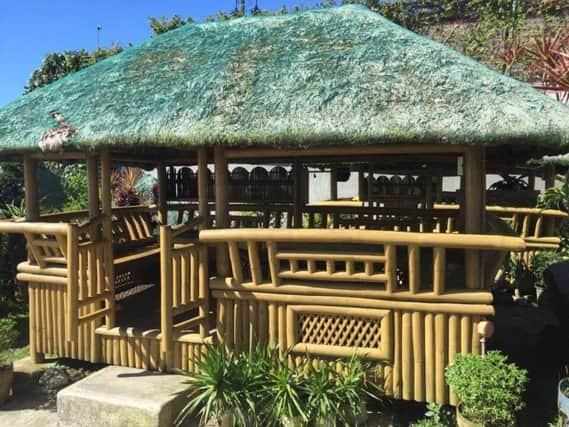Touch of exotic Philippines on way to Scottish gardens


A Scottish tradesman inspired by a recent holiday to the Philippines has launched the country’s first business importing traditional nipa huts.
The structures, which date back to the 16th century, were once widespread across rural swathes of the western Pacific archipelago. Crafted out of bamboo and hardwood with roofs made from coconut leaves, the huts were built to shelter lowland families from flooding and fierce temperatures. But now, the indigenous housing design is being promoted as a unique twist on the shed or summerhouse.
Advertisement
Hide AdDavid Symon, from Argyll, was on holiday visiting friends in the Philippines last December when they visited a local restaurant. His party was ushered outside into a private dining area, located in a nipa hut. As he ate, he was struck by the idea of transporting the structures back to Scotland.
“I didn’t know what it was called at the time, but I thought, ‘Oh, this is quite nice’. These would look lovely in a garden,” he recalled.
With no outlets for the huts in Scotland, Symon, 64, spent three weeks touring the country before he centred on Laguna, a province on the southern shores of Laguna de Bay, near the port of Manila. Eventually, the decking and double-glazing installer found a local family business who handcrafted the huts, and struck a deal to begin exporting them to Scotland. After a 40-day sea journey, a container with the first shipment of 12 huts is due to arrive in Grangemouth in May.
With prices starting from around £2,000, word of mouth has seen Symon sell four of the units – which measure six feet by six feet – with one customer planning to install a hot tub in his hut.
“It’s a summer trend and if a young couple or a family buy something like this for their garden, their neighbours will want one,” he said. “It’s keeping up with the Joneses stuff”, said Symon, pictured above.
“We’ve had around 15,000 visitors to our website. I think people find they are good value compared to traditional large sheds, and it’s something different.”
Advertisement
Hide AdAccording to Manuel Noche, a historian in the architecture of the Philippines, based at the University of Santo Tomas in Manila, the construction of rural native huts in the country has “changed little” over the centuries.
Common design features include a steep roof and a one- or two-room living area, with the entire structure raised on stilts.
Advertisement
Hide AdWhile the Scottish nipa huts will be slightly raised off the ground, they will not be so high as to invite the suspicion of local authority planning departments.
While the structures may be a conspicuous addition to the average Scottish garden, Symon believes they are ideally suited to withstand rain and wind. Bamboo, he points out, has a higher strength to weight ratio than graphite. “If they can stand up to tornadoes and typhoons in the Philippines, they can stand up in Scotland,” he said.
With interest from hoteliers and publicans interested in buying the huts, Symon is optimistic there is a wider market for the structures. “I’ve had a phonecall from B&Q, who buy a year ahead, and a meeting is being set up for next year,” he said.
“I’m going to need to bring in more than 12 at a time if they go for it.”